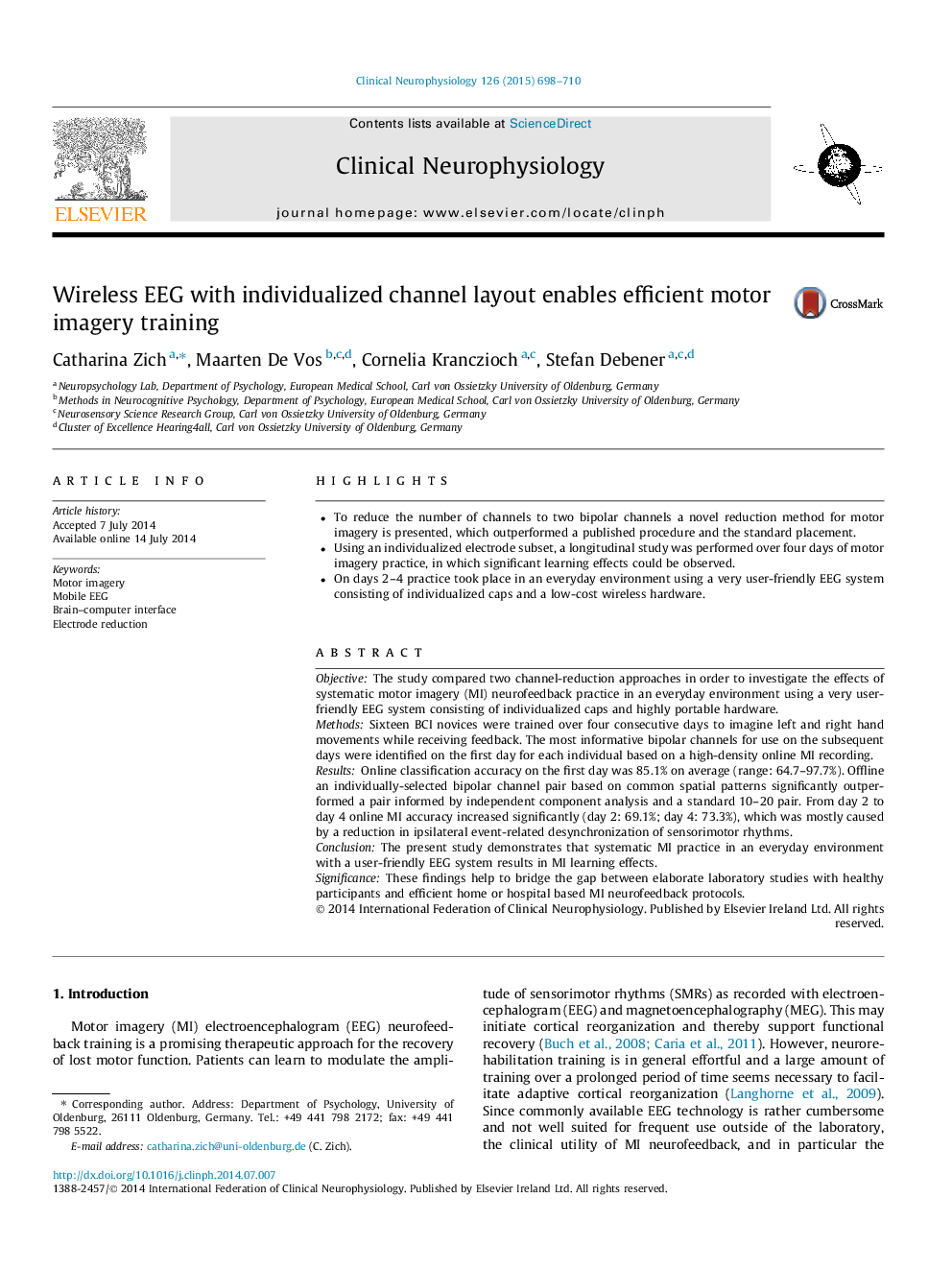| Article ID | Journal | Published Year | Pages | File Type |
|---|---|---|---|---|
| 3042997 | Clinical Neurophysiology | 2015 | 13 Pages |
•To reduce the number of channels to two bipolar channels a novel reduction method for motor imagery is presented, which outperformed a published procedure and the standard placement.•Using an individualized electrode subset, a longitudinal study was performed over four days of motor imagery practice, in which significant learning effects could be observed.•On days 2–4 practice took place in an everyday environment using a very user-friendly EEG system consisting of individualized caps and a low-cost wireless hardware.
ObjectiveThe study compared two channel-reduction approaches in order to investigate the effects of systematic motor imagery (MI) neurofeedback practice in an everyday environment using a very user-friendly EEG system consisting of individualized caps and highly portable hardware.MethodsSixteen BCI novices were trained over four consecutive days to imagine left and right hand movements while receiving feedback. The most informative bipolar channels for use on the subsequent days were identified on the first day for each individual based on a high-density online MI recording.ResultsOnline classification accuracy on the first day was 85.1% on average (range: 64.7–97.7%). Offline an individually-selected bipolar channel pair based on common spatial patterns significantly outperformed a pair informed by independent component analysis and a standard 10–20 pair. From day 2 to day 4 online MI accuracy increased significantly (day 2: 69.1%; day 4: 73.3%), which was mostly caused by a reduction in ipsilateral event-related desynchronization of sensorimotor rhythms.ConclusionThe present study demonstrates that systematic MI practice in an everyday environment with a user-friendly EEG system results in MI learning effects.SignificanceThese findings help to bridge the gap between elaborate laboratory studies with healthy participants and efficient home or hospital based MI neurofeedback protocols.
